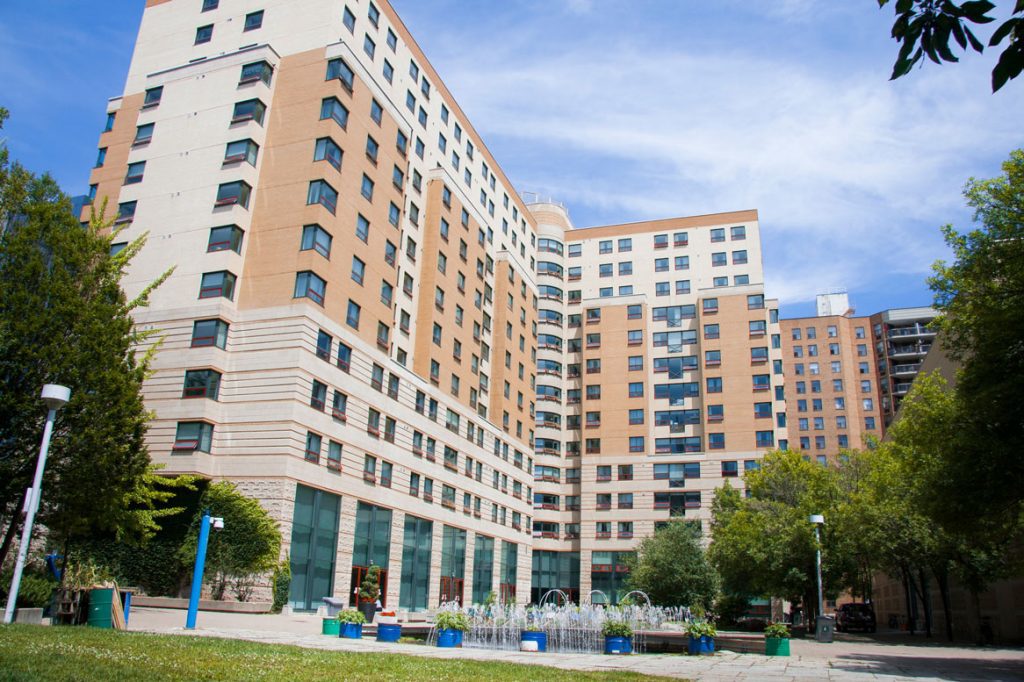Ryerson-affiliated and independent student residences have tried to adapt to COVID-19 challenges, but some students say there is still more to be done

The first full academic year during the pandemic is coming to an end, and some students living in residence wish they got more out of their experience.
Living in residence normally provides students with a community of fellow students who are looking to connect with peers. Along with the structure of having regular events to meet and make connections.
When moving into Pitman Hall at the beginning of this school year, James Caza, a first-year media production student, had high hopes for a year in student housing.
“At the time of signing the lease in late summer, it looked like we wouldn’t have a second wave,” said Caza.
In an interview with the Ryersonian in September at the start of the school year, Caza had said residence was a great experience so far.
While Ryerson has the capacity for up to 1,144 students living in their buildings, only 350 students moved in last semester, allowing for each student to have a private bathroom.
Due to these rules, Caza lived alone in one of Pitman Hall’s four-bedroom apartments.
As of now, only 302 students are living in Ryerson’s student housing, according to Housing and Residence Life.
While Caza was able to make some friends, and maintain a small social bubble in residence, he
said the virtual events hosted by the residence team were not ideal for meeting new people.
“You want to have one-on-one conversations to get to know each other,“ said Caza, something he says is not possible with large group zoom calls.
Hannah Mercanti, a first-year journalism student also living in Pitman Hall, said at the beginning of the fall semester they were able to interact with quite a few of their peers, thanks to better weather and more relaxed regulations. However, when the second wave and new restrictions came into the picture, challenges began to surface.
“It got really hard to maintain friendships,” according to Mercanti.
Students haven’t only faced issues within residence buildings operated by Ryerson, but also in third-party student housing.
HOEM on Jarvis was once one of Ryerson’s official residence buildings, but has since split from the university in the last year, operating independently but still being home to many Ryerson students.
Matthew Lisk, a first-year performance production student living in HOEM, said he feels like he’s missing out on a “huge part of [the] university experience.”
Lisk said HOEM on Jarvis has made attempts to mitigate the loneliness felt by students through programming like group walks and events on zoom, however turn-out is usually pretty low.
Trying to make new friends under these conditions has been “extremely challenging” according to Lisk.
Lisk is just one of many young people feeling the weight of the pandemic. An Ipsos poll from February 2021 found 60 per cent of young Canadians report feeling isolated or lonely due to social distancing, a four point increase from just three months prior.
Just as the pandemic strained social relations in residence, it also has presented a slew of new health concerns.
While both Ryerson-affiliated residence buildings and HOEM on Jarvis have outlined COVID-19 safety guidelines, this has not stopped some students from breaking the rules.
Caza and Mercanti said some students in Pitman Hall continued to host parties throughout the pandemic.
At HOEM, Lisk had similar concerns with roommates hosting and attending parties, along with a lack of respect for mask guidelines in common areas.
Despite this, there have been few cases connected to Ryerson campus. Housing and Residence Life said they do not release case numbers in an effort to protect the privacy of community members. However, last week it was reported that three external contractors working out of Ryerson residence buildings recently tested positive for COVID-19.
HOEM on Jarvis has also kept COVID-19 case numbers confidential from students, according to Lisk.
While residences have tried to accommodate students by adjusting living arrangements and virtual events, the limited in-person interaction takes a toll.
Living through the second wave of the pandemic, with changing rules and further limitations, staying in Pitman Hall was no longer sustainable for Caza, leading him to move out early.
Mercanti said one of the biggest gaps in support from housing and residence was the lack of mental health resources, “the little signs they put around the building and the emails they send really aren’t enough.”
With the combination of unfulfilling events, limited common spaces, mental health concerns and more intensive restrictions under the second and now third wave of the pandemic, this year’s residence experience is unlike anything of years prior.
For students looking to live in residence in the 2021-22 school year, Housing and Residence Life will not be releasing any official plans on what it could look like until president Mohamed Lachemi’s upcoming announcement on the school year in June.
